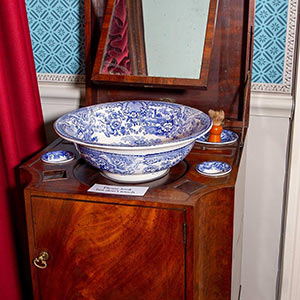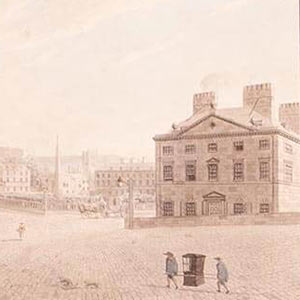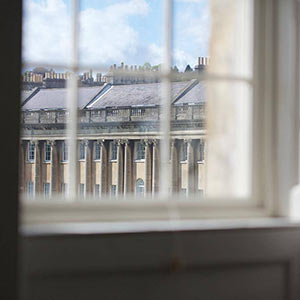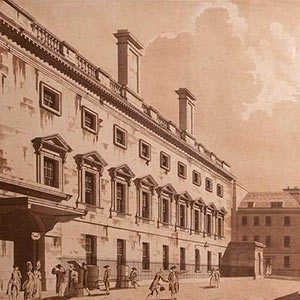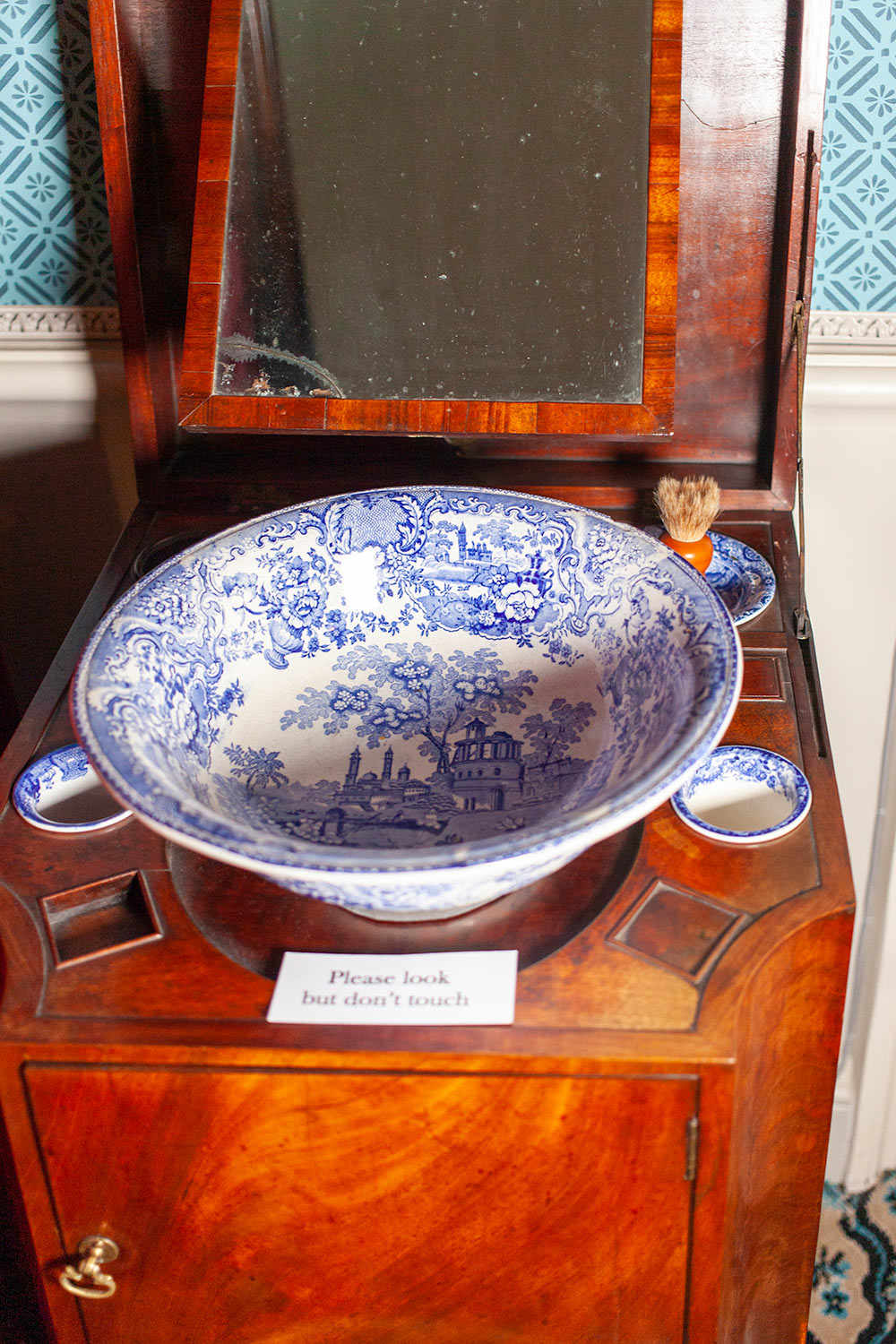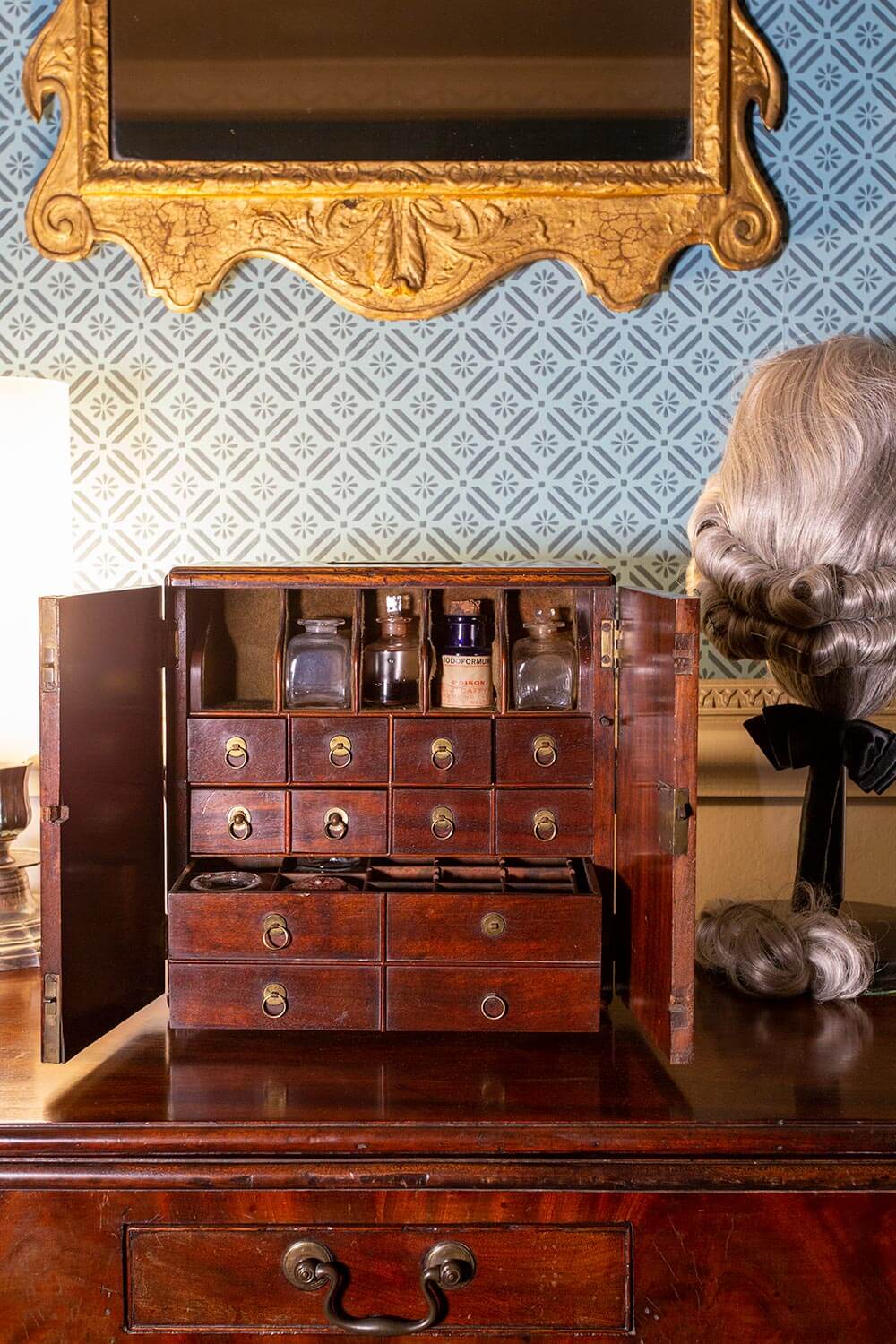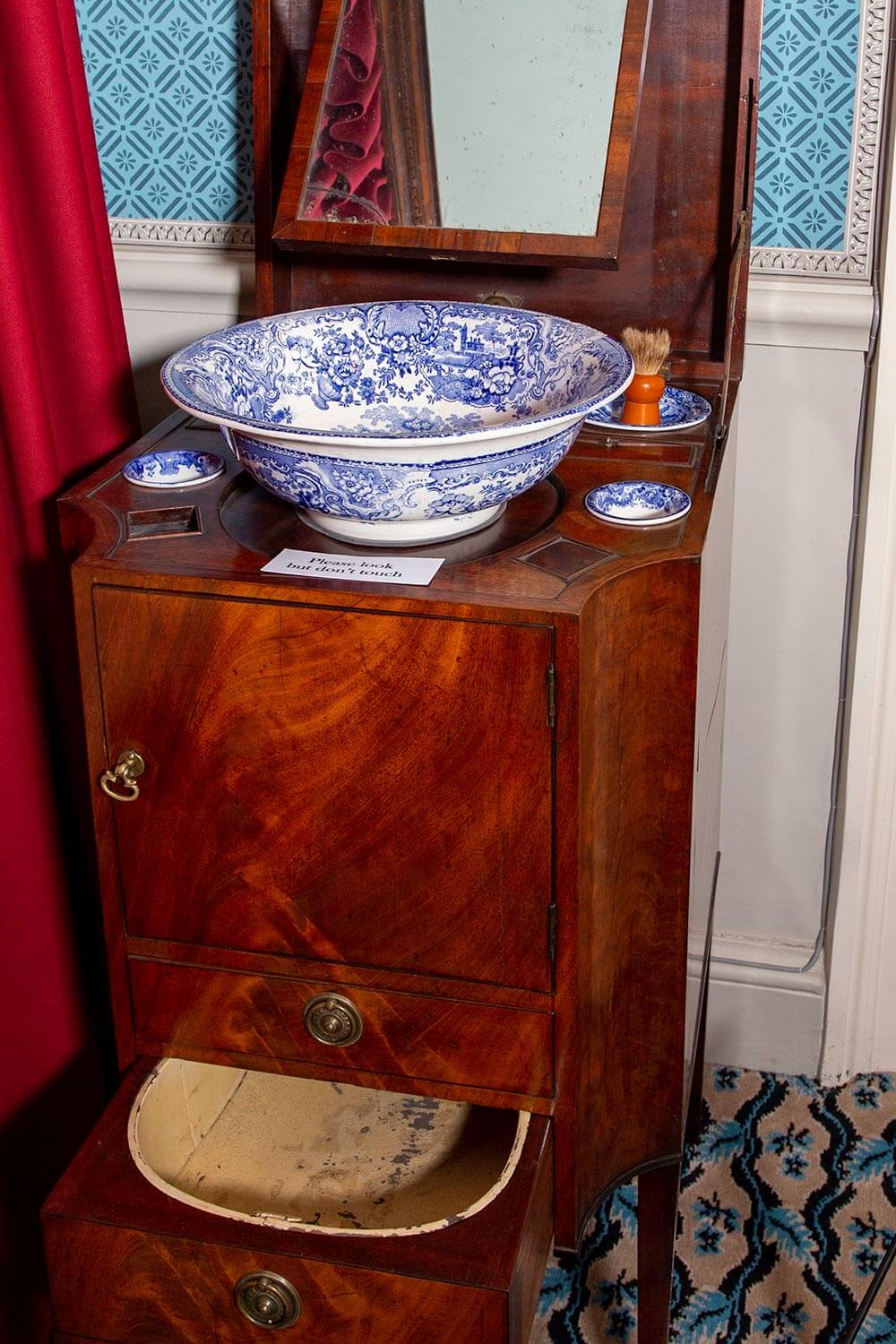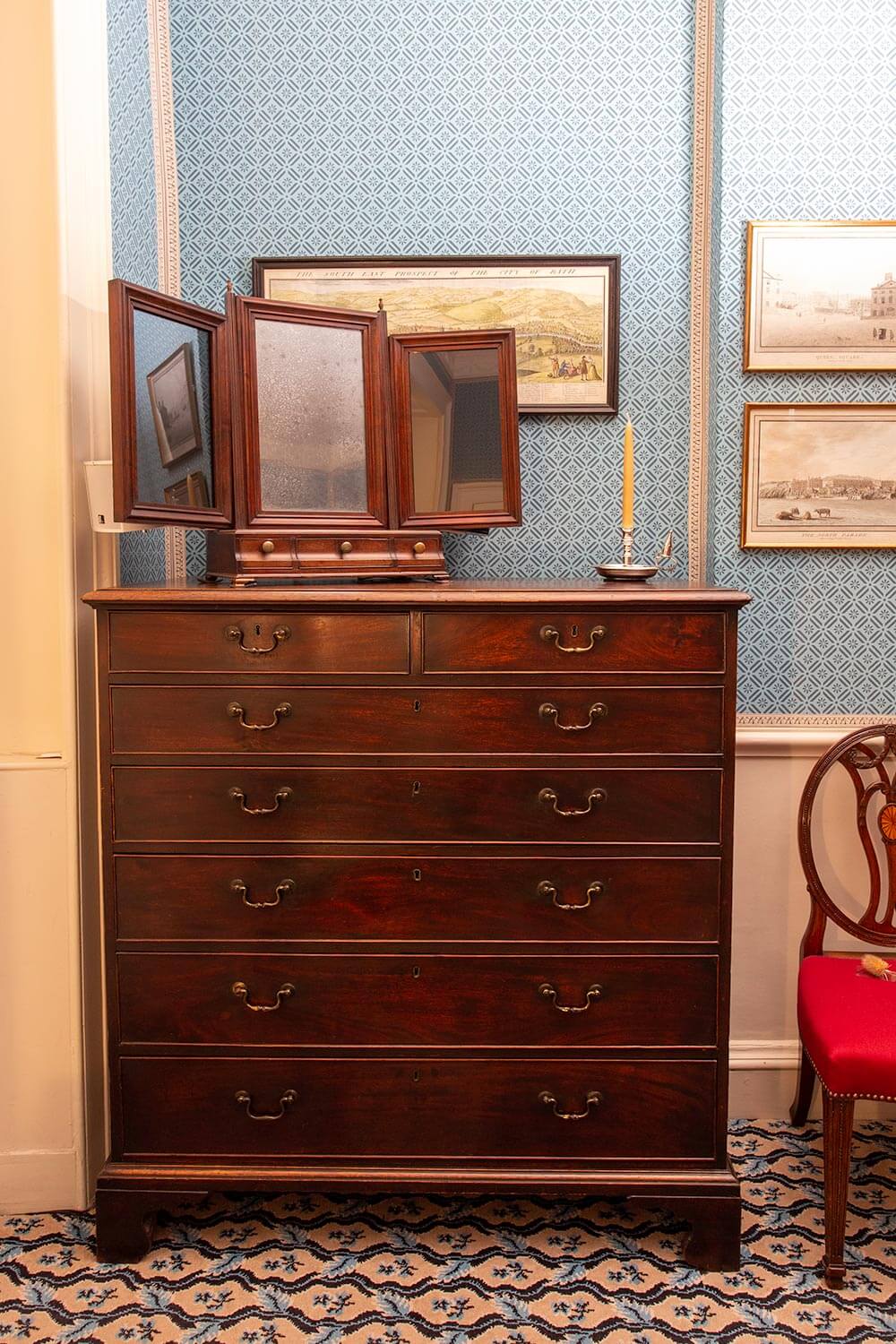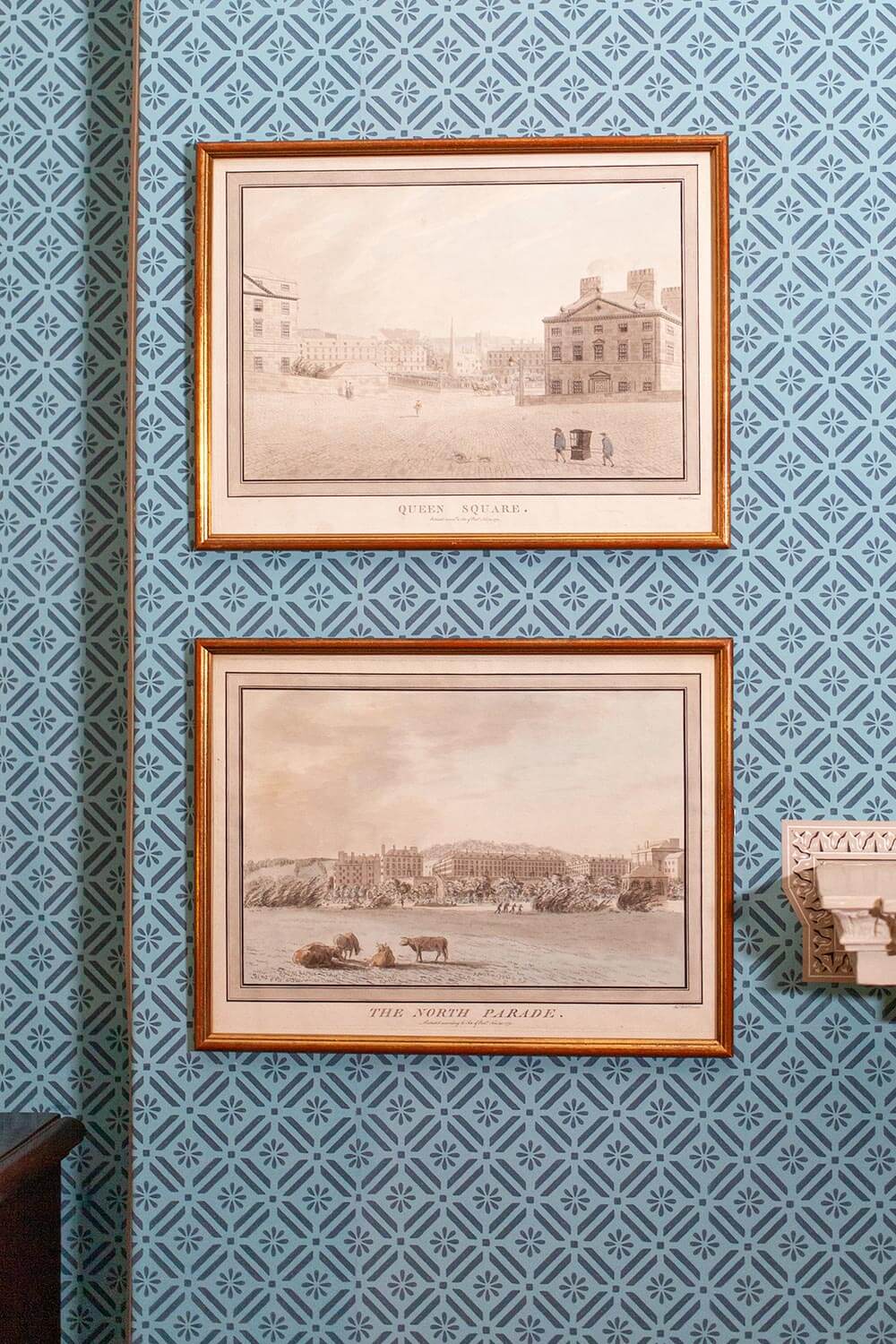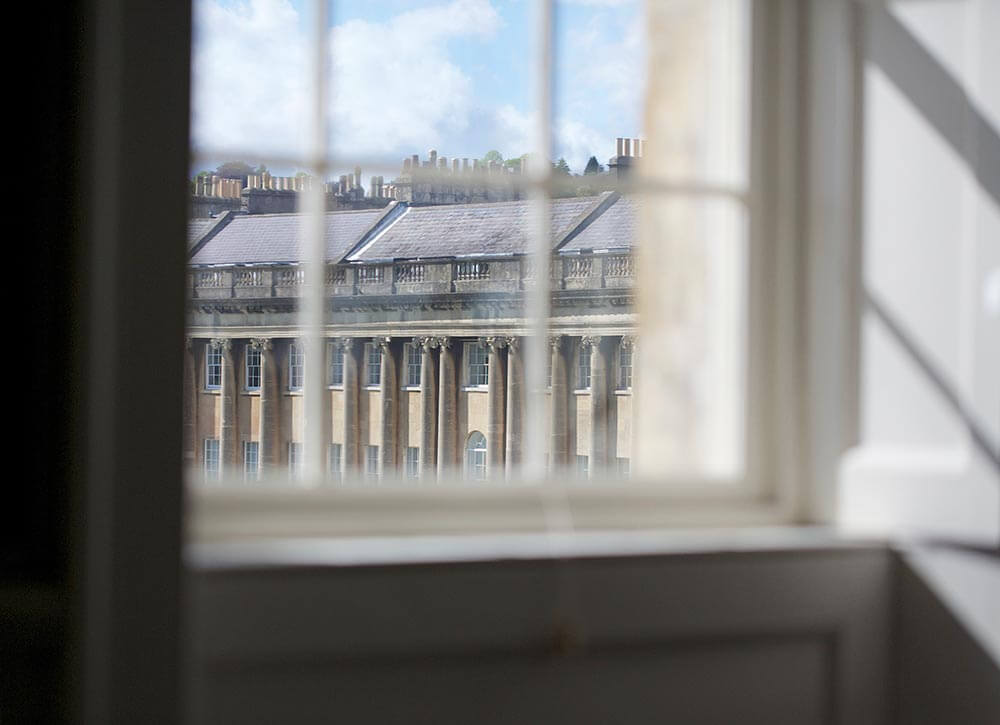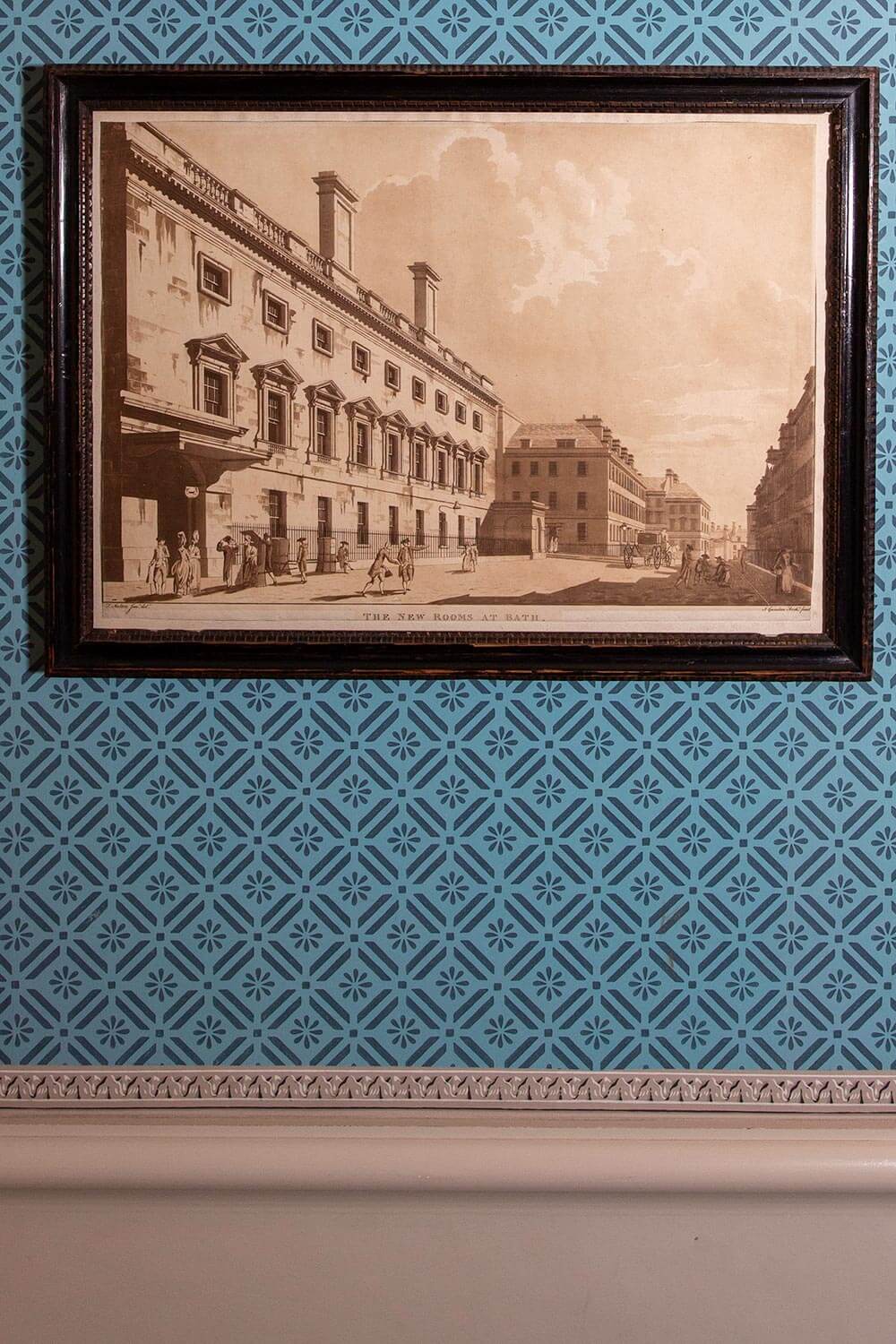Many visitors came to Bath for their health, the hot mineral waters of the spa having reputed healing properties. A gentleman’s bedroom provided him with space for rest and recuperation.
Married couples in the Georgian upper class usually kept separate bedrooms, and although handsomely furnished, a gentleman’s room would have been far less elaborate than that of a lady.

